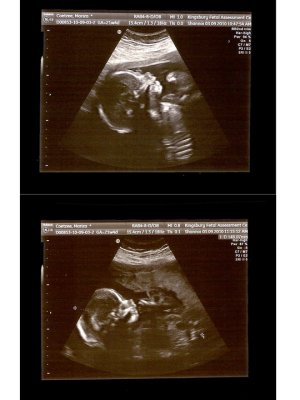When I was pregnant with Mikayla Rose, I often compared it to hell (I know, I am a great mom). I had a terrible experience… It started with severe nausea and vomiting (Hyperemesis Gravidarum) that lasted all day and all night for the entire duration of my pregnancy and it only got worse when my gynecologist at the time convinced me that there was no way that I would carry full term and that I would most probably suffer a miscarriage. I also apparently had very little amniotic fluid surrounding the baby. Subconsciously this resulted in me ‘disconnecting’ myself from my pregnancy and baby to some extent. It was stressful and I was depressed – I cried every single time we left the gynecologist’s office. This fear of miscarriage carried on up until about six months – waiting for the supposedly inevitable the whole time. My husband and I never shared this with anyone, it was confusing and private – and we still had hope.
We eventually decided to make an appointment at the Fetal Assessment Center in Cape Town to get a second professional opinion – the result? Baby is perfectly fine and normal, a little bit on the small side, but absolutely nothing to be alarmed about. That gynea pretty much ruined my pregnancy… Anyway…As I’ve mentioned in a previous post, Being A Mom With Tattoos, we decided to rather go back to my hometown to have my family doctor deliver Mikayla – we carried a full term and the only reason for the emergency cesarian was that there were very high ketone levels in my urine and my constant vomiting was denying my body and my baby the nutrition we needed.
Everyone talks about that moment when they first lay eyes on their babies, when they felt this huge rush of love, when they knew they would give their life for this child in an instant, when their life hits this pinnacle of pinnacles. My moment wasn’t exactly like that, and it took me a while to realize that it was fine (and normal) too.

